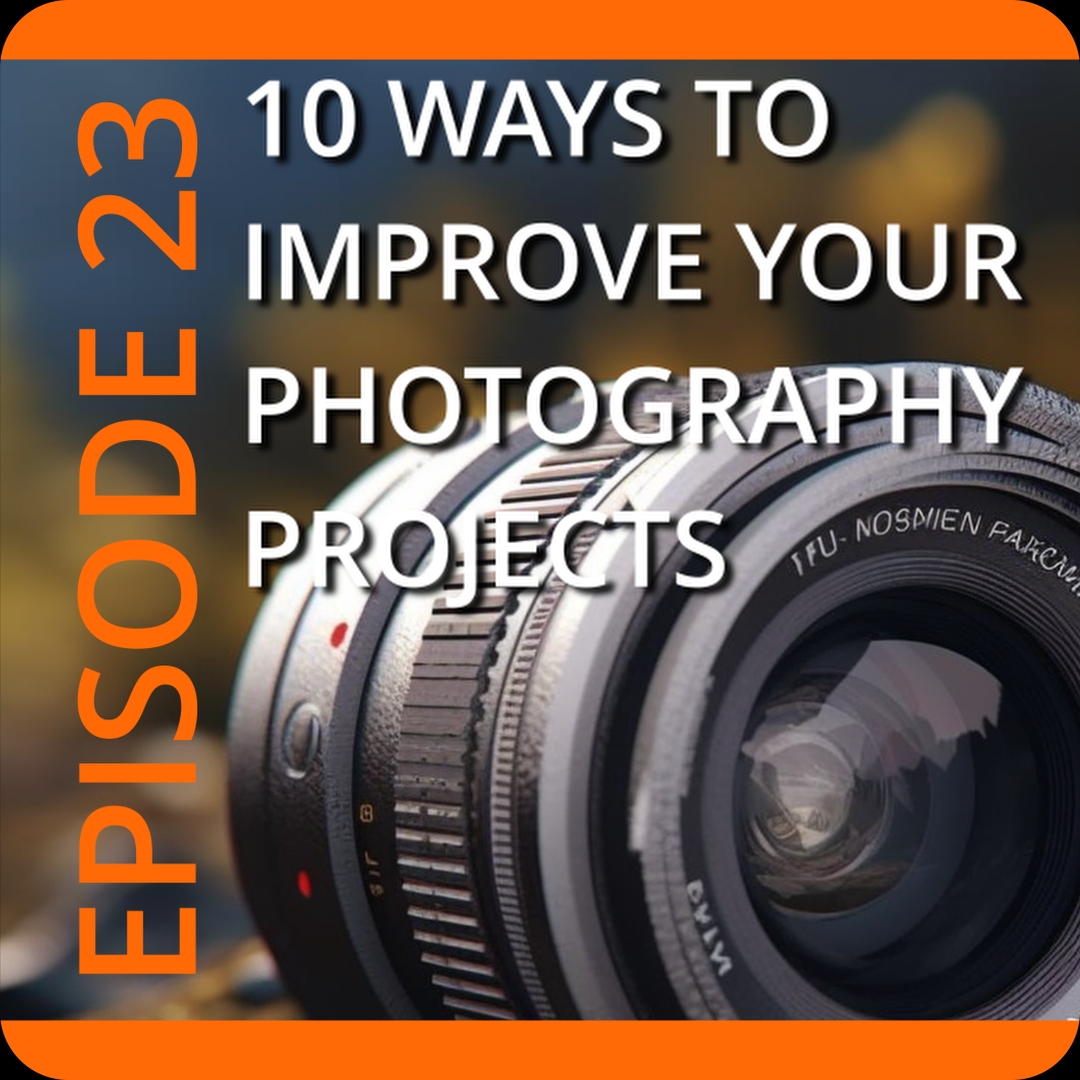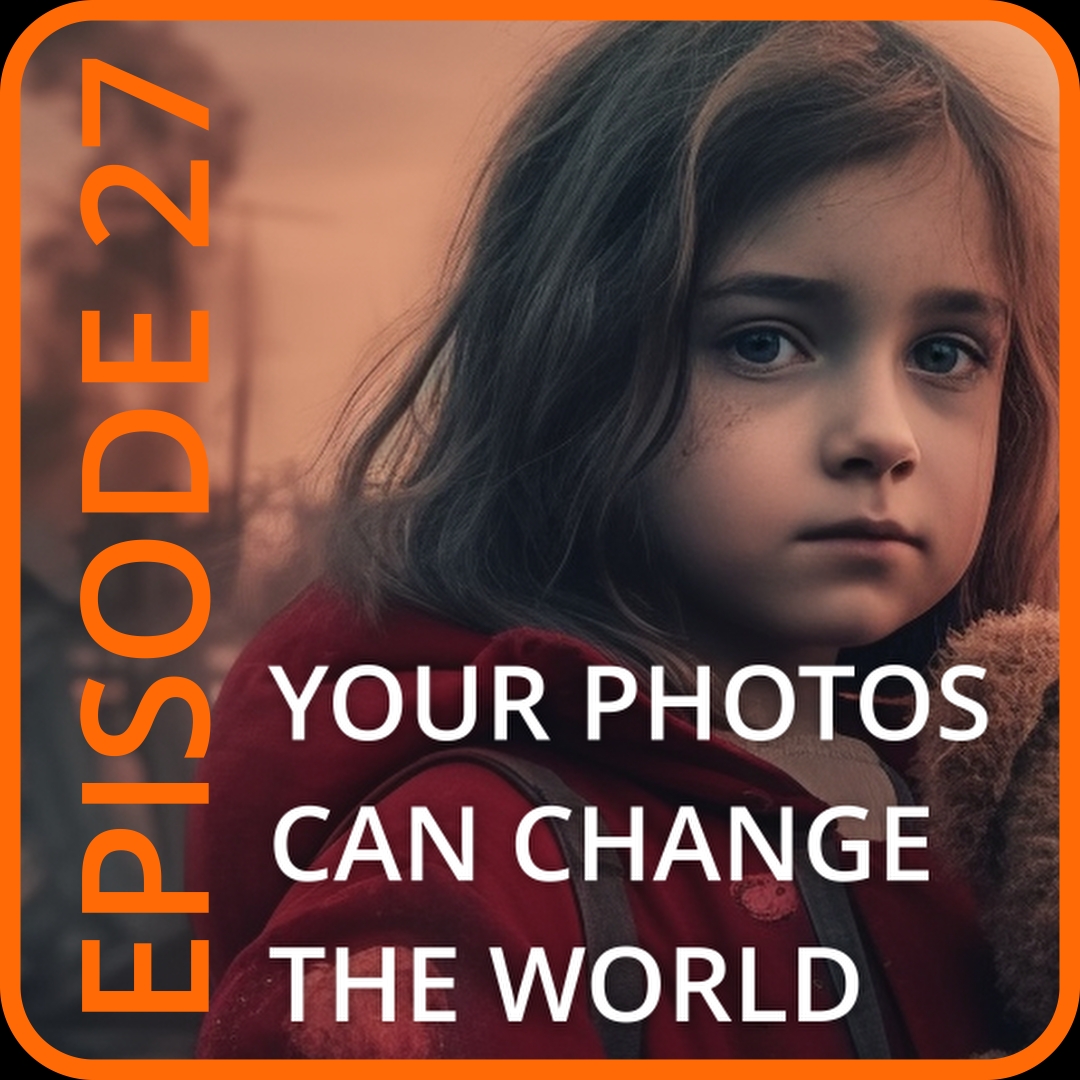Please note this post may contain affiliate links picked by me (Jay) that I have deemed may be of interest or relevant to you the reader of this.
These links do not affect the cost of the thing if you decide to purchase but i may get a little money if you choose to purchase.
For more information on my affiliate link policy click here.
Episode 23: 10 Tips for better photographic projects
Title: “Mastering the Art of Crafting a Successful Photography Project: A Comprehensive Guide by Jay, The Photography Junkie”
Introduction
Hey there, fellow photography enthusiasts!
It’s Jay, your host from “The Photography Junkie,” and I’m thrilled to embark on this enlightening journey with you. Today, we’re diving deep into the world of creating truly remarkable photography projects. Whether you’re just starting out or you’re an experienced photographer looking to up your game, this comprehensive guide is designed to equip you with the knowledge and inspiration to make your projects stand out.
In this detailed blog post, we’re going to break down every step of the process, from finding your photographic passion to the nitty-gritty of presentation and exhibition. Plus, we’ll explore real-world examples to illustrate each point, so you can see these concepts in action. Let’s get started on the path to photography project success!
Finding Your Photographic Passion
First things first, let’s talk about finding your photographic passion.
You might be thinking, “I already know what I love to shoot,” and that’s fantastic! But let’s take a moment to dive a little deeper.
Your Photographic Passion:
Think about what genuinely excites you about photography. What subjects or themes stir your emotions? Is it the intricate details of macro photography, the thrill of capturing wildlife in its natural habitat, or perhaps the story behind each street scene? Your passion is your compass; it will guide your creative journey.
Example:
Imagine you’re passionate about wildlife photography. You’re drawn to the majesty of nature and the fascinating behaviors of animals. Your passion might lead you to create a project that documents the migratory patterns of a particular bird species over the course of a year, showcasing their behavior, habitats, and the challenges they face.
Defining Your Project’s Purpose
Now that you’ve identified your passion, it’s time to give your project a clear purpose.
This is where the magic happens. Your project’s purpose will guide your creative decisions and make your work truly resonate with your audience.
Project Purpose:
Think of your project’s purpose as its beating heart. What message or story do you want your images to convey? Are you looking to inform, inspire, or provoke thought? Your purpose is what gives your project significance.
Example:
Let’s say your project revolves around environmental conservation. Your purpose could be to raise awareness about endangered species. Your images will aim to highlight their beauty while also showcasing the threats they face in their natural habitats. Your purpose is to inspire action and change.
Planning Your Project
Successful photography projects require meticulous planning.
Outlining the scope, timeline, and resources needed for your project is essential. Will it be a short-term endeavor or a long-term commitment? What equipment will you require, and what locations will you visit?
Project Scope:
Defining the scope of your project involves specifying what you intend to capture. Will it focus on a particular geographic area, a specific community, or a broader theme? Determining the boundaries within which you’ll work is crucial for planning effectively.
Example:
Imagine you’re planning a project focused on capturing the changing seasons in a specific forest. This isn’t something you can capture in a single outing. You’ll need to plan multiple visits over the course of a year, ensuring you have the right lenses and equipment for different lighting conditions.
Research and Inspiration
Before you head out into the field, immerse yourself in research and seek inspiration.
Study the work of renowned photographers who have tackled similar themes or subjects. This not only provides valuable insights but also fuels your creative vision.
Research and Inspiration:
Start by creating a mood board or a visual diary of images that resonate with your project’s theme. Explore the works of photographers who have successfully executed similar projects. Analyze their techniques, compositions, and storytelling methods.
Example:
If you’re inspired by Ansel Adams and his stunning landscape photography, delve into his techniques and compositions to better understand how he captured the essence of nature in his images. Learn from the masters to enrich your own work.
Storytelling Through Your Lens
Photography is a powerful storytelling medium.
Use your images to tell a compelling narrative that resonates with your audience. Consider the sequence of your shots, the emotions they evoke, and the connections they create.
Visual Storytelling:
To craft a story through your photographs, think about the beginning, middle, and end of your project. Your images should unfold like chapters in a book, guiding viewers through your narrative. Pay attention to visual elements that evoke emotion and curiosity.
Example:
Imagine your project documents a community’s struggle for survival. Use a combination of intimate portraits, candid moments, and environmental shots to weave a narrative that captivates viewers and elicits empathy. Each image should contribute to the larger story you’re telling.
Technical Excellence
To make your project truly shine, it’s essential to master the technical aspects of photography.
Understand exposure, composition, lighting, and post-processing techniques. Strive for technical excellence to ensure your images are technically flawless.
Technical Mastery:
Technical proficiency is the backbone of your project. Master the use of your camera, from manual settings to advanced features. Learn to control exposure, manipulate depth of field, and harness the power of light to your advantage.
Example:
If you’re capturing a series of architectural photographs, pay attention to details like straight lines, symmetry, and lighting to create visually striking images that showcase your subject’s beauty. Technical expertise ensures that your vision is executed flawlessly.
Consistency is Key
Consistency is the hallmark of a successful photography project.
Maintain a consistent style, color palette, and mood throughout your work. This helps create a cohesive body of work that leaves a lasting impression.
Visual Consistency:
Consistency in photography projects is akin to creating a cohesive visual language. Ensure that your images share common visual elements, such as color tones, contrast levels, and composition styles. This reinforces your project’s theme.
Example:
In a project centered around urban decay, maintain a consistent desaturated color palette to highlight the bleakness and abandonment of the subject matter. Consistency in style reinforces the message you want to convey.
Feedback and Collaboration
Don’t be afraid to seek feedback from peers, mentors, or your audience.
Constructive criticism can help you refine your project and improve your skills. Consider collaborating with other creatives to bring fresh perspectives into your work.
Feedback and Collaboration:
Engage with a community of photographers, whether through online forums or local photography clubs. Share your work-in-progress and be open to feedback. Collaborating with others can infuse new ideas and creative energy into your project.
Example:
Collaborating with a writer, you can add textual elements to your project, creating a multi-dimensional experience for your audience by combining compelling narratives with powerful visuals. Collaborations expand the horizons of your project.
The Importance of Editing
Editing is where your project truly takes shape.
Select your best images, refine them in post-processing, and arrange them to create a cohesive narrative. Be ruthless in your editing process, only including images that contribute to your project’s story.
Editing Excellence:
Editing isn’t just about post-processing; it’s about curating your body of work. Review your images critically, and select the strongest ones that align with your project’s purpose. Post-process these images to enhance their impact while maintaining visual consistency.
Example:
For a documentary-style project on a social issue, choose images that showcase key moments and emotions, leaving out any shots that don’t directly contribute to the narrative you’re crafting. Editing is where you refine and distill your project to its essence.
Presentation and Exhibition
How you present your photography project is crucial.
Consider the platform where you’ll showcase your work, whether it’s a physical gallery, online portfolio, or a multimedia presentation. Make sure your presentation complements the theme and purpose of your project.
Creative Presentation:
Imagine you’re creating an online exhibition to document indigenous cultures. Your website becomes an immersive experience, with stunning images accompanied by audio interviews that provide context and depth. This multimedia presentation engages viewers on multiple levels, enhancing their understanding and connection to your project.
Conclusion
Congratulations, photography junkies!
You’ve made it through this comprehensive guide on creating successful photography projects. Remember that every journey begins with a single step, so don’t hesitate to start planning your next project today.
Your Path to Success:
By finding your passion, defining your purpose, planning meticulously, and honing your technical and creative skills, you’re well on your way to crafting photography projects that not only capture the essence of your subject but also resonate deeply with your audience. And always remember, inspiration can be found everywhere, from the grandeur of nature to the intricacies of everyday life.
Embrace the Adventure:
So, grab your camera, embrace the challenges, and let your inner photography junkie lead you on an incredible creative adventure. Happy shooting!
Outro
And that’s a wrap for today’s blog post! I hope you found this guide helpful and inspiring on your photography journey. If you have any questions or want to share your own experiences, feel free to leave a comment below. Until next time, keep those shutters clicking and those creative juices flowing. This is Jay from “The Photography Junkie,” signing off.












